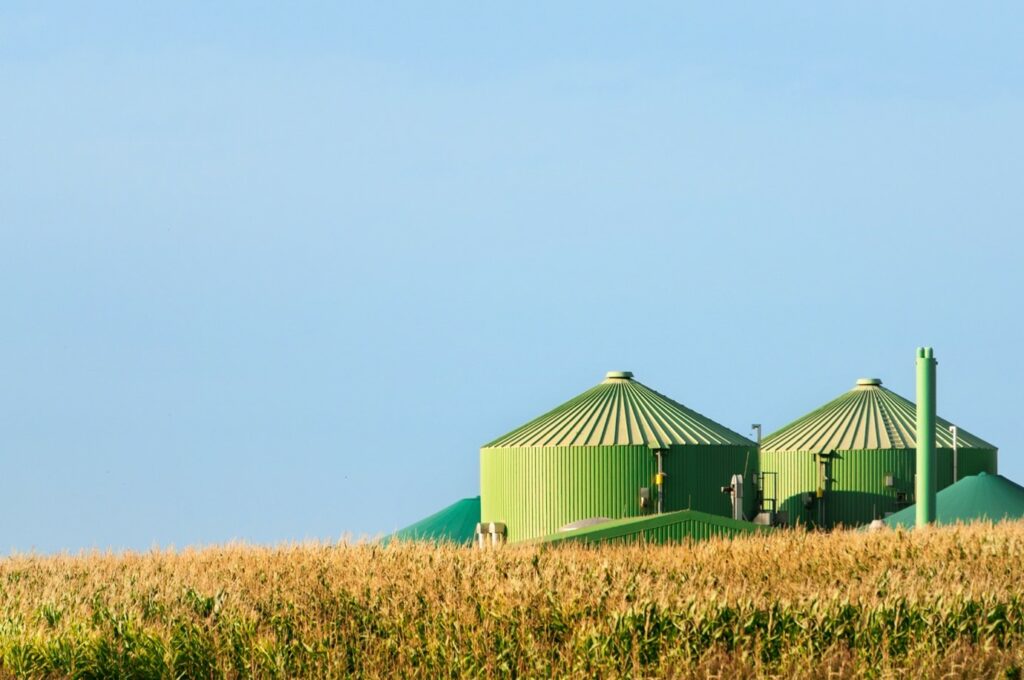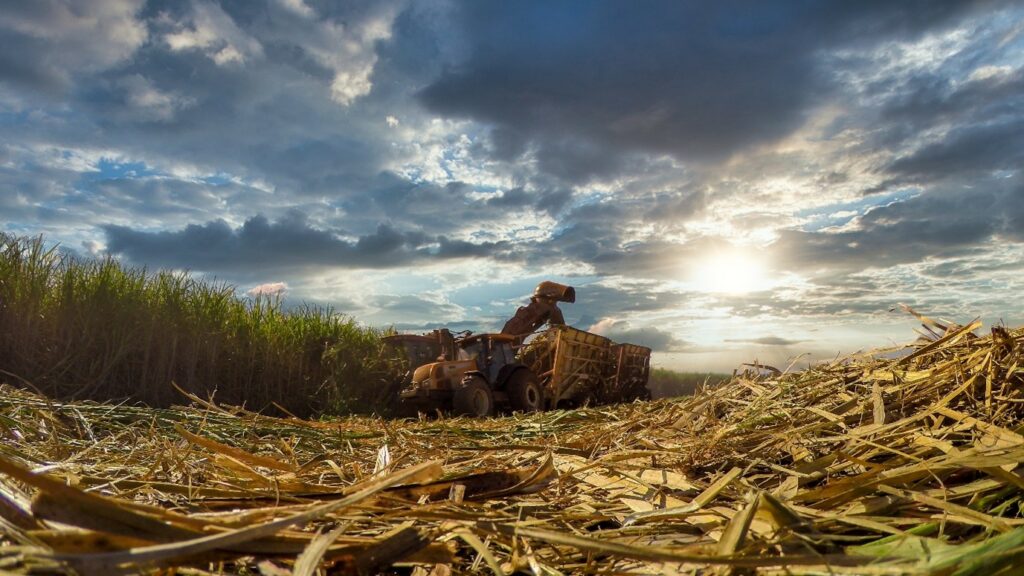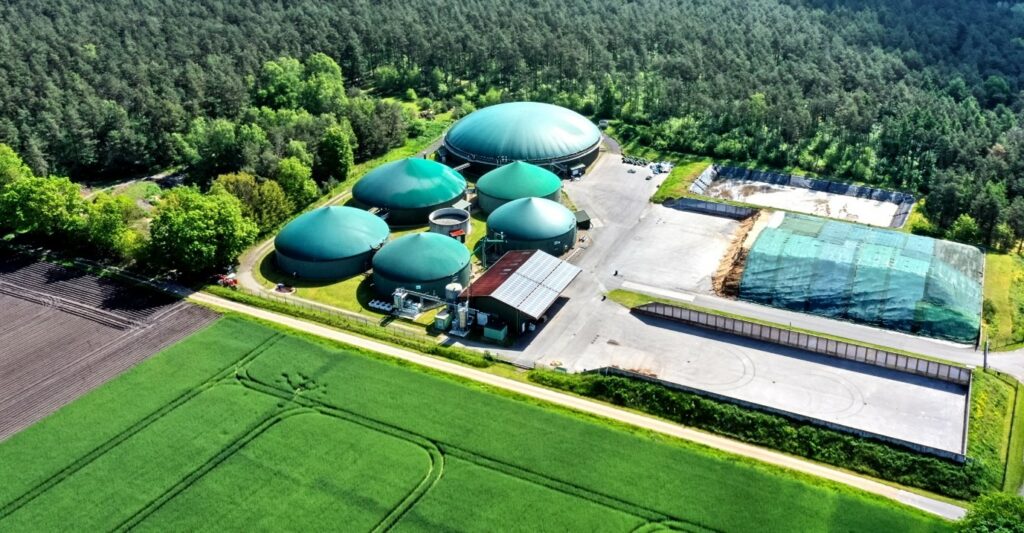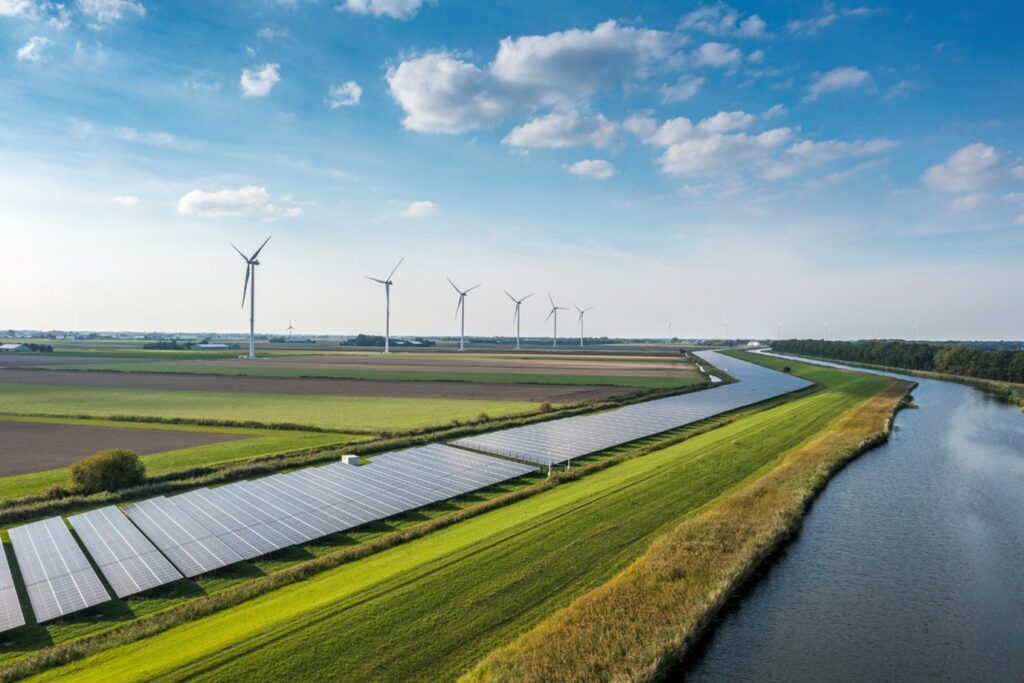February 29, 2024
1. What is Biomass Energy?
Biomass energy is a renewable energy source derived from living or recently living organisms, mostly plants, which can be converted into heat, electricity, or biofuels. Biomass energy is commonly derived from plants, agricultural and forestry residues, animal waste, and other organic matter. These materials can be used directly as fuel or converted into various forms of bioenergy, such as biofuels, biogas, and bioelectricity, through different processes like combustion, fermentation, and chemical conversion.

2. What is the history of biomass energy?
The use of biomass for energy dates back to ancient times when humans burned wood for heating and cooking. The industrial revolution saw the development of more efficient biomass technologies, such as steam engines powered by wood or crop residues. During the 20th century, the focus shifted towards fossil fuels, and biomass lost its prominence. However, in recent decades, there has been a renewed interest in biomass energy as concerns about climate change and the environmental impact of fossil fuels have grown. Technological advancements have also made biomass energy more efficient and economically viable.
3. How is biomass used?
Biomass energy usage can be categorized into several forms:
- Biofuels: Biomass is converted into liquid or gaseous fuels such as ethanol and biodiesel, which can be used for transportation and as an alternative to traditional fossil fuels.
- Biogas: Organic materials can be anaerobically digested to produce biogas, a mixture of methane and carbon dioxide. Biogas can be used for heating, electricity generation, or as a vehicle fuel.
- Bioelectricity: Biomass can be burned directly or converted into electricity through processes like combustion or gasification. Biomass power plants generate electricity and can provide a reliable source of renewable energy.
- Bioheat: Biomass can be used for heating purposes in residential, commercial, and industrial settings. Wood pellets, for example, are a popular form of biomass used for space heating.
- Waste-to-Energy: The combustion of municipal solid waste or other organic waste materials can generate energy, contributing to waste management and energy production simultaneously.

Biomass energy is considered renewable because the carbon dioxide released during its combustion is offset by the carbon dioxide absorbed by plants during their growth. However, it is crucial to manage biomass resources sustainably to avoid environmental degradation and ensure long-term viability. As technology continues to advance, biomass energy is likely to play an increasingly important role in the global transition to a more sustainable and low-carbon energy system.
4. What are the most common types of biomass used?
- Wood and Agricultural Residues: This includes wood logs, chips, and pellets, as well as agricultural residues like crop stalks, straw, and husks.
- Biofuels: Liquid or gaseous fuels produced from biomass, including ethanol, biodiesel, and biogas. Ethanol is often derived from crops like corn or sugarcane, while biodiesel is typically made from vegetable oils or animal fats. Biogas is produced through anaerobic digestion of organic waste.
- Municipal Solid Waste (MSW): Organic components of household waste, such as food scraps and yard waste, can be used for biomass energy production.
- Algae: Algae can be cultivated and processed to produce biofuels, such as biodiesel and bioethanol.
- Animal Waste: Manure from livestock, such as cows and pigs, can be used to produce biogas through anaerobic digestion.
- Energy Crops: Specifically grown for energy purposes, examples include switchgrass, miscanthus, and willow.

5. What are the main Biomass Conversion technologies?
- Combustion: Biomass can be burned directly to produce heat or converted into electricity through combustion. This is a common method used in residential heating, industrial processes, and biomass power plants.
- Gasification: Biomass undergoes a thermochemical process in which it is converted into a gas (syngas) composed of carbon monoxide, hydrogen, and methane. This gas can be used for electricity generation or as a feedstock for the production of biofuels and chemicals.
- Anaerobic Digestion: Microorganisms break down organic matter in the absence of oxygen, producing biogas (methane and carbon dioxide). This process is commonly used with organic waste, sewage, and agricultural residues.
- Pyrolysis: Biomass is heated in the absence of oxygen, leading to the production of bio-oil, syngas, and biochar. Bio-oil can be used as a liquid fuel, while syngas can be used for electricity generation.
- Fermentation: This process involves the conversion of sugars from biomass into biofuels, such as ethanol and butanol, using microorganisms like bacteria and yeast.
- Cofiring: Biomass is mixed with coal and burned in conventional coal-fired power plants, reducing the overall carbon emissions and increasing the renewable energy content.
Each biomass-to-energy conversion technology has its advantages and challenges, and the choice of method depends on factors such as the type of biomass, energy requirements, and environmental considerations. The development and adoption of these technologies contribute to the diversification of the energy mix and the reduction of greenhouse gas emissions in the quest for a more sustainable energy future.

6. What are the Advantages of Biomass Energy?
This section delves into the advantages that make biomass energy a compelling solution in the global pursuit of cleaner and more sustainable alternatives. From its inherent renewability and carbon-neutral characteristics to its role in waste reduction, job creation, and versatility in applications, we discuss the diverse benefits that position biomass energy as a crucial player in shaping the future of our energy landscape.
- Renewable Source: Biomass energy is considered renewable because the organic materials used, such as plants and crop residues, can be replenished through natural processes. As long as biomass resources are managed sustainably, they can provide a continuous and reliable source of energy.
- Carbon Neutral: The concept of carbon neutrality in biomass energy relates to the carbon cycle. When plants grow, they absorb carbon dioxide from the atmosphere through photosynthesis. When biomass is burned or converted into bioenergy, it releases carbon dioxide. The key is that the carbon released during combustion is roughly equal to the amount absorbed during the biomass’s growth. This makes biomass energy a carbon-neutral or low-carbon option, contributing less to net greenhouse gas emissions compared to fossil fuels.
- Waste Reduction: Biomass energy often utilizes organic waste materials, including agricultural residues, forestry waste, and organic components of municipal solid waste. By converting these waste materials into energy, biomass systems contribute to waste reduction, offering an environmentally friendly alternative to traditional waste disposal methods.
- Economic Benefits: Job Creation and Support to Local Economies: The biomass industry provides economic benefits by creating jobs in various stages of the biomass supply chain, from cultivation and harvesting to processing and distribution. Additionally, the use of locally sourced biomass can support local economies, reducing dependence on external energy sources and promoting regional economic development.
- Energy Security: Biomass energy can enhance energy security by diversifying the energy mix. Unlike fossil fuels, which often rely on global supply chains, biomass resources are locally available. This reduces dependence on imported energy sources and helps mitigate the impact of geopolitical events on energy supplies.
- Versatility: Different Forms of Biomass and Their Applications: Biomass is a versatile energy source with various forms and applications:
- Solid Biomass: Wood, crop residues, and energy crops can be used for heating, cooking, and electricity generation.
- Liquid Biofuels: Ethanol and biodiesel derived from biomass can be used as alternatives to gasoline and diesel in the transportation sector.
- Biogas: Produced through anaerobic digestion, biogas can be used for heating, electricity generation, and as a vehicle fuel.
- Biochemicals: Biomass can be converted into chemicals, such as bio-based plastics and bio-based materials, contributing to a more sustainable and circular economy.
- Biomass’s versatility allows it to be integrated into various sectors, providing a flexible and adaptable source of renewable energy for different energy needs.
In summary, biomass energy offers a range of advantages, from its renewability and carbon-neutral nature to its role in waste reduction, job creation, energy security, and versatility. These factors contribute to its appeal as a sustainable and environmentally friendly energy option in the broader context of addressing climate change and transitioning to a low-carbon future.

7. What are the Disadvantages of Biomass Energy?
Emissions:
- Air Pollution: The combustion of biomass can release pollutants into the air, including particulate matter, nitrogen oxides (NOx), and volatile organic compounds (VOCs). While modern biomass combustion technologies employ advanced emission control measures, some level of air pollution can still occur, particularly in traditional or poorly managed systems.
- Greenhouse Gas Emissions: Although biomass is considered carbon-neutral over its lifecycle, the combustion process releases carbon dioxide (CO2), methane (CH4), and other greenhouse gases. While the carbon emitted is theoretically offset by the carbon absorbed during biomass growth, improper management or inefficient conversion processes can lead to a net increase in greenhouse gas emissions.
Efficiency:
- Comparison with Other Energy Sources: Biomass energy systems, especially traditional combustion methods, may have lower efficiency compared to some other renewable energy sources like wind or solar. Advanced conversion technologies, such as gasification and anaerobic digestion, can improve efficiency, but they may come with higher initial costs and technical complexities.
Cost:
- Investment Costs: The upfront investment required for establishing biomass energy systems, especially advanced technologies, can be relatively high. This includes costs associated with equipment, infrastructure, and facility construction.
- Operation and Maintenance Costs: While biomass feedstocks are often locally available and can be cost-competitive, the operation and maintenance costs of biomass facilities can vary. Regular maintenance and monitoring are essential for ensuring optimal performance and preventing environmental issues.
- Competitive Pricing: Biomass energy may face challenges in competing with low-cost fossil fuels, especially in regions where traditional energy sources are abundant and inexpensive. Government incentives and supportive policies are often necessary to make biomass economically competitive.
It’s important to note that advancements in technology and ongoing research are addressing some of these disadvantages. For instance, the development of more efficient conversion technologies, improved emission control measures, and efforts to enhance the sustainability of biomass feedstock production can contribute to minimizing the environmental and economic drawbacks associated with biomass energy. Additionally, a comprehensive and well-regulated approach is essential to ensure that biomass energy systems are designed, implemented, and managed in an environmentally responsible manner.

8. What are some examples of biomass energy usage?
Biomass energy projects have left a lasting imprint on the global energy landscape, with diverse applications and impacts. Examining real-world case studies offers a nuanced perspective on how biomass energy is harnessed and its significance in both developed and developing countries.
In developed nations like the United States, the University of Iowa’s Biomass Fuel Project stands out as a shining example. The university successfully transitioned from coal to biomass, using oat hulls and wood chips to generate heat and power. This not only reduced carbon emissions but also showcased the economic feasibility of biomass energy.
Meanwhile, in developing countries like Kenya, the Gorge Farm Energy Park has demonstrated the transformative power of biomass. By utilizing organic waste from agricultural activities to generate electricity, the project addresses both energy needs and waste management challenges. Such initiatives underscore the potential of biomass to provide sustainable solutions tailored to the specific needs of different regions.
A comparative analysis between developed and developing countries reveals the varying degrees of success and challenges faced in implementing biomass energy projects. In developed nations, where technological and financial resources are abundant, biomass projects often serve as crucial components of diversified renewable energy portfolios. These projects contribute to meeting sustainability goals and reducing dependence on conventional fossil fuels.
Conversely, in developing countries, biomass energy often plays a vital role in addressing energy poverty and promoting sustainable development. The reliance on local organic resources for energy production aligns with the principles of self-sufficiency and environmental conservation. However, challenges such as limited funding, technological constraints, and the need for capacity building highlight the complexities faced in these regions.
One of the notable success stories in the developing world is the Indian state of Karnataka’s biomass-based power generation initiatives. The state has strategically employed biomass resources, including agricultural residues and forestry waste, to meet a significant portion of its energy demands. This has not only improved rural electrification but has also created employment opportunities in biomass collection, processing, and power generation.
Another success story comes from Sweden, a developed nation with a strong commitment to renewable energy. The Värtaverket biomass power plant in Stockholm utilizes locally sourced wood pellets, contributing to the country’s transition away from fossil fuels. This project showcases the integration of biomass energy into urban environments, emphasizing the adaptability of this renewable resource.
Despite success stories, challenges persist in the widespread adoption of biomass energy globally. Regulatory frameworks, infrastructure limitations, and the need for skilled labor often pose hurdles. In some cases, the lack of awareness and understanding of biomass energy’s potential hinders its broader acceptance.
9. What are the main technological innovations in biomass energy?
In the dynamic realm of renewable energy, technological innovations serve as catalysts for progress and sustainability. The sphere of biomass energy, in particular, has witnessed significant strides in conversion and processing methodologies. This section delves into the latest advancements shaping the landscape of biomass energy and explores the promising future prospects poised to enhance efficiency and mitigate negative environmental impacts:
- In the dynamic realm of renewable energy, technological innovations serve as catalysts for progress and sustainability. The sphere of biomass energy, in particular, has witnessed significant strides in conversion and processing methodologies. This section delves into the latest advancements shaping the landscape of biomass energy and explores the promising future prospects poised to enhance efficiency and mitigate negative environmental impacts:
- Advanced Gasification Technologies: Advances in gasification technologies have led to improved efficiency and reduced emissions. Superior gasification processes allow for the production of a clean syngas, which can be used for power generation or converted into biofuels and other valuable products.
- Biomass Torrefaction: Torrefaction is a thermal treatment process that involves heating biomass in the absence of oxygen. This results in a more energy-dense and stable product known as torrefied biomass. Torrefaction improves the energy content, grindability, and hydrophobic properties of biomass, making it a more versatile and efficient fuel source.
- Integrated Biorefineries: Integrated biorefineries aim to extract multiple valuable products from biomass feedstocks, going beyond simple energy production. These facilities can produce biofuels, biochemicals, and other materials, maximizing the utilization of biomass resources and enhancing economic viability.
- Bioengineered Feedstocks: Advances in synthetic biology and genetic engineering enable the development of bioenergy crops with enhanced characteristics, such as higher yield, resistance to pests, and improved energy content. These innovations aim to optimize biomass production for energy purposes.
- Pyrolysis Upgrading: Catalytic pyrolysis involves using catalysts to enhance the pyrolysis process, resulting in higher yields of valuable bio-oils and a reduction in undesired by-products. This technology improves the efficiency of converting biomass into liquid biofuels.
- Carbon Capture and Utilization (CCU): CCU in Biomass Power Plants: Integration of carbon capture and utilization technologies in biomass power plants helps reduce greenhouse gas emissions. By capturing and utilizing carbon dioxide emissions, biomass facilities can achieve carbon-negative status.
- Smart Grid Integration: Biomass power plants are increasingly being integrated into smart grids, allowing for better management of energy production and consumption. This integration enhances grid stability and facilitates the efficient use of biomass energy.
10. What are the most promising future Prospects in biomass energy?
- Advanced Feedstock Production: Ongoing research focuses on developing energy crops and sustainable feedstock production methods to ensure a reliable and abundant biomass supply without competing with food crops.
- Bioenergy with Carbon Capture and Storage (BECCS): BECCS involves capturing carbon dioxide emissions from biomass facilities and storing them underground. This approach aims to achieve negative carbon emissions, making biomass energy a potential tool in carbon sequestration efforts.
- Machine Learning and Process Optimization: The application of machine learning algorithms for process optimization in biomass facilities can enhance efficiency by predicting and adjusting parameters in real time, improving overall performance and reducing environmental impacts.
- Circular Economy Approaches: Integrating biomass production and energy conversion within a circular economy framework, where waste from one process becomes a resource for another, can enhance sustainability and minimize negative environmental impacts.
- Hybrid Energy Systems: Combining biomass with other renewable energy sources, such as solar and wind, in hybrid energy systems can provide a more reliable and consistent energy output, addressing the intermittent nature of some renewables.
11. What is the Policy and Regulatory Framework like for biomass energy?
Governments around the world have recognized the importance of biomass energy as a key player in the transition towards a more sustainable energy future. The implementation of supportive policies serves as a driving force, creating an environment conducive to the growth and integration of biomass technologies. These policies often focus on promoting renewable energy sources, reducing carbon emissions, and achieving energy security.
In some regions, governments have established Renewable Portfolio Standards (RPS) or Renewable Energy Standards (RES) mandating a certain percentage of energy production to come from renewable sources, including biomass. Such directives provide a clear market signal, incentivizing investments in biomass energy projects and fostering market growth.
Additionally, feed-in tariffs and power purchase agreements (PPAs) have been instrumental in ensuring a predictable revenue stream for biomass energy producers. These mechanisms guarantee a fair price for the electricity generated from biomass, thereby enhancing the economic viability of projects and attracting private sector investments.
Subsidies and incentives form a crucial part of the policy toolkit, encouraging the adoption of biomass energy and mitigating financial barriers. Governments often provide direct financial support or tax incentives to biomass producers, making it more economically attractive compared to conventional energy sources.
In some instances, Renewable Energy Credits (RECs) or Green Certificates are employed as tradable commodities, rewarding biomass energy producers for the environmental benefits they confer. This market-based approach allows for flexibility and efficiency in achieving renewable energy targets.
Environmental regulations also play a pivotal role in shaping the biomass energy landscape. Emission standards and air quality regulations influence the adoption of cleaner biomass technologies, encouraging the industry to continuously improve its environmental performance.
It’s essential to note that the effectiveness of policies depends on their alignment with broader energy and environmental goals, as well as the local context. Striking a balance between promoting biomass energy and ensuring environmental sustainability requires nuanced policy design and continuous evaluation.
12. How does Biomass energy compare to other renewable energy sources?
The quest for sustainable energy solutions has given rise to a diverse array of renewable sources, each with its unique strengths and challenges. In this section, we embark on a comparative analysis, juxtaposing biomass energy with other prominent renewable sources – solar, wind, and hydro. By delving into their respective attributes, we aim to unravel the distinctive contributions of biomass energy and discern its role in the intricate tapestry of the global energy mix.

Comparison with Other Renewable Sources:
- Solar Energy:
Strengths: Solar energy harnesses the power of the sun through photovoltaic cells, offering a near-limitless and clean energy source. It is highly scalable and applicable in diverse settings, from residential rooftops to large solar farms.
Challenges: Solar energy generation is contingent on sunlight availability, making it intermittent and dependent on geographic location. Energy storage solutions are critical to address the intermittency challenge.
- Wind Energy:
Strengths: Wind energy taps into the kinetic energy of the wind, providing a scalable and established source of renewable power. Wind turbines can be deployed both onshore and offshore, offering versatility in deployment.
Challenges: Variability in wind speed and potential environmental impacts on local ecosystems are challenges. Wind farms also require substantial upfront investment and maintenance.
- Hydro Energy:
Strengths: Hydroelectric power is a well-established and reliable source, leveraging the energy of flowing water. Large-scale hydroelectric dams contribute significantly to grid stability and energy production.
Challenges: Environmental concerns related to habitat disruption and land use, as well as the high initial costs associated with dam construction, are notable challenges.
- Biomass Energy:
Strengths: Biomass energy utilizes organic materials, providing a consistent and controllable energy source. It offers the advantage of carbon neutrality, as the carbon emitted during combustion is part of the natural carbon cycle.
Challenges: Concerns about land use, emissions, and efficiency compared to other renewables are challenges. Striking a balance between biomass production and environmental conservation is crucial.
13. What is biomass energy’s role in the global energy mix?
Biomass energy occupies a unique niche in the global energy mix, offering advantages in terms of dispatchability and base-load capabilities. Unlike intermittent sources like solar and wind, biomass can provide a constant and reliable energy supply, contributing to grid stability.
Its role is particularly vital in sectors where direct electrification may be challenging, such as industrial processes and certain heating applications. Biomass can be converted into various forms, including heat, electricity, and biofuels, making it versatile in addressing diverse energy needs.
However, biomass energy’s contribution to the global energy mix is contingent on sustainable practices, efficient technologies, and careful consideration of environmental impacts. Integrating biomass with other renewable sources in a diversified energy portfolio can enhance overall resilience and contribute to the transition towards a low-carbon future.
Biomass energy, with its ability to provide reliable and dispatchable power, plays a crucial role alongside solar, wind, and hydro in shaping a balanced and sustainable global energy landscape. Striking the right mix and leveraging the strengths of each source is key to meeting the world’s growing energy demands while mitigating environmental impacts.
14. CZ Outlook

Biomass energy, derived from organic materials, represents a versatile and renewable resource with various applications, including power generation, heating, and biofuel production. This energy source has both advantages and challenges, and its sustainability depends on responsible feedstock management, efficient conversion technologies, and adherence to environmental safeguards.
Biomass energy is poised to play a crucial role in the evolving landscape of global energy strategies. As the world grapples with the urgent need to transition towards sustainable and low-carbon energy sources, biomass offers a unique set of advantages. Its reliability as a dispatchable energy source, coupled with the potential for carbon negativity through innovations like carbon capture and storage, positions biomass as a valuable contributor to a resilient and diversified energy portfolio.
The future role of biomass energy will be shaped by continued advancements in technology, ongoing policy support, and a commitment to sustainable practices. As innovations in feedstock utilization, carbon capture, and biorefinery concepts unfold, biomass energy will likely become an even more integral part of the renewable energy mix.
In conclusion, biomass energy stands at the intersection of tradition and innovation, offering a bridge to a more sustainable energy future. By addressing challenges, embracing technological advancements, and fostering global collaboration, biomass energy can carve a path towards a resilient, low-carbon, and inclusive global energy landscape. As the world strives for a sustainable future, biomass energy stands ready to play a vital role in powering the transition to a greener and more resilient world.
15. Further Reading
The IEA Bioenergy provides comprehensive reports, publications, and resources on bioenergy, including biomass energy.
Explore the latest research, reports, and updates on biomass energy from the U.S. Department of Energy.
EUBIA offers insights into European biomass initiatives, policies, and research, providing valuable information for a global perspective.
WBA focuses on global bioenergy promotion, offering reports, webinars, and articles on biomass and bioenergy.
A platform providing news, articles, and reports covering various aspects of bioenergy, including biomass energy.
IRENA offers reports and publications on renewable energy, including biomass, providing a global perspective on sustainable energy solutions.
Biomass Magazine provides industry news, articles, and resources related to biomass energy production and utilization.
Bioenergy Insight covers news, projects, and developments in the bioenergy sector, including biomass.
A comprehensive platform covering various renewable energy topics, including biomass, with articles, news, and reports.
Green Car Congress provides insights into biomass-related developments, particularly in the context of biofuels and transportation.
If you’d like to know more about how CZ Adivse can help you, please contact our Team.


